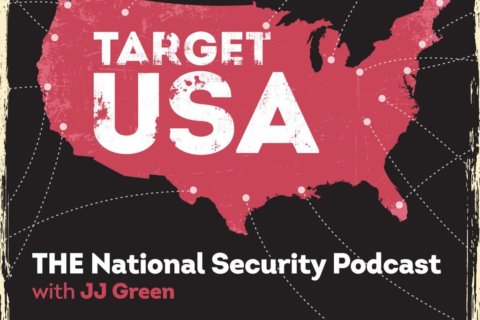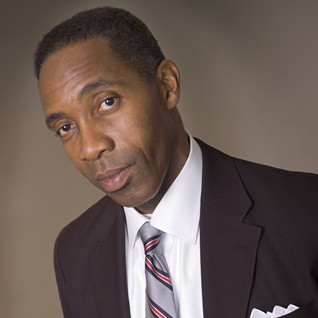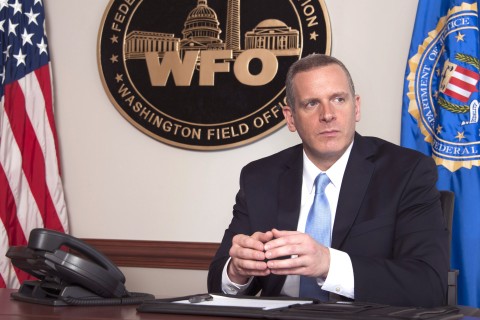WASHINGTON — Iraqi-led coalition forces are creeping ever closer to a showdown with the Islamic State of Iraq and the Levant (ISIL) in Mosul, shutting down every escape route behind them. ISIL leader Abu Bakr al-Baghdadi is still in Mosul, according to well-connected Iraqis.
Hoshyar Zebari, former deputy prime minister of Iraq, told members of the press a week ago he had “solid” intelligence Baghdadi was hiding in Mosul. Another senior Iraqi official, who spoke on the condition of anonymity, told WTOP that Baghdadi, like many other senior ISIL leaders, may be trying to escape.
A U.S. intelligence official said in a statement to WTOP that ISIL leaders have been predictable when backed into a corner.
“After suffering a string of losses over the last year, including the symbolically important city of Dabiq, Syria, ISIL faces a decision point: Hold the line in Mosul or beat a retreat. ISIL has, in the past, prioritized its own survival, and, in most cases, fled when faced with overwhelming force,” said the official.
Baghdadi’s exact location is uncertain because he rarely stays in one place, said Col. John Dorrian, spokesman for Operation Inherent Resolve (OIR), the U.S.-led coalition fighting ISIL.
“What I hear is that he’s moving around constantly. Many of the leaders that surround him have been killed. When their replacements are named, those people have been killed. So I think he has to sleep with one eye open and when we find him, that’ll be the end of him,” said Dorrian in an interview with WTOP.
None of ISIL’s original leadership is left, leaving Baghdadi in a precarious security situation. “Really, all the significant figures around him have been taken away and, in some cases, their replacements have been taken away. I don’t think there is too much enthusiasm to be ISIL’s number two, because that job doesn’t have long-term prospects,” Dorrian said.
Numerous ISIL commanders are on the run, pushed by concern that they might be killed or captured. Iraqi intelligence sources tell WTOP that if Baghdadi chooses to run, his options appear to be limited to the road leading west to Raqqa, Syria, and the underground.
Neither is promising in the long term. But the labyrinth of tunnels underneath Mosul, at the very least, provides cover.
“They’ve had two years there in order to build some pretty elaborate defenses. We’ve seen tunneling and we’ve seen them move larger barriers that are intended to slow the Iraqi advance,” said Dorrian.
The U.S. intelligence official said the battle for Mosul will be difficult for a number of reasons.
“Iraqi forces have long telegraphed their intent to liberate Mosul and have devoted significant resources to the operation. Key tactical challenges they will face are negotiating the improvised defenses laid by ISIL, defeating the terrorists in urban fighting and securing the city’s civilian population,” said the intelligence official.
In addition to tunnels, large berms have been dug — some of them filled with oil and ignited to create what U.S. military officials call “obscuration fires.” Thick, black smoke billows into the air, making it hard to see.
But in Qayyarah, 40 miles to the south of Mosul, the scene is much more dire. ISIL militants detonated explosives inside a colossal sulfur deposit, creating a massive fire that has spewed poisonous fumes into the air. Drifting with the wind, the sulfur has sent hundreds to hospitals with respiratory troubles and burning sensations in their eyes.
“All of these things complicate the assault on the city and the effort to liberate it,” said Dorrian.
The difficulties have compelled the liberating forces to slow down and, in some cases, to stop.
As Iraqi and coalition forces rolled through the towns of Tal-Fayf, eight miles northeast of Mosul; Telskuf, 19 miles north of Mosul; and Bartella, 13 miles east of Mosul, they encountered “a tremendous network of tunnels,” said a senior Kurdish government official.
Many of those tunnels, according to the official, were too dangerous to explore because of concerns about booby traps and because they were filled with soil, burying whatever and whoever might have been in them.
But in some of the tunnels deemed safe enough to search, Peshmerga forces found elaborate living spaces, complete with electricity, cooking appliances and bedding.
If Baghdadi chooses to seek refuge in the tunnels, he risks the same fate as the late Iraqi dictator Saddam Hussein, who was found hiding in a hole in the ground under a farmhouse in his ancestral region of Tikrit on Dec. 13, 2003.








